Other A to Z Guides from The Scarecrow Press, Inc.
1. The A to Z of Buddhism by Charles S. Prebish, 2001.
2. The A to Z of Catholicism by William J. Collinge, 2001.
3. The A to Z of Hinduism by Bruce M. Sullivan, 2001.
4. The A to Z of Islam by Ludwig W. Adamec, 2002.
5. The A to Z of Slavery & Abolition by Martin A. Klein, 2002.
6. Terrorism: Assassins to Zealots by Sean Kendall Anderson and Stephen Sloan, 2003.
7. The A to Z of the Korean War by Paul M. Edwards, 2005.
8. The A to Z of the Cold War by Joseph Smith and Simon Davis, 2005.
9. The A to Z of the Vietnam War by Edwin E. Moise, 2005.
The A to Z
of the Vietnam War
Edwin E. Mose
The A to Z Guides, No. 9

SCARECROW PRESS, INC.
Published in the United States of America
by Scarecrow Press, Inc.
A wholly owned subsidiary of
The Rowman & Littlefield Publishing Group, Inc.
4501 Forbes Boulevard, Suite 200, Lanham, Maryland 20706
www.scarecrowpress.com
PO Box 317
Oxford
OX2 9RU, UK
The A to Z of the Vietnam War is a revised paperback edition of the Historical Dictionary of the Vietnam War, by Edwin E. Mose, published by Scarecrow Press in 2001.
Copyright 2005 by Edwin E. Mose
All rights reserved. No part of this publication may be reproduced, stored in a retrieval system, or transmitted in any form or by any means, electronic, mechanical, photocopying, recording, or otherwise, without the prior permission of the publisher.
British Library Cataloguing in Publication Information Available
The hardback version of this book was previously cataloged by the Library of Congress as follows:
Moise, Edwin E., 1946
Historical dictionary of the Vietnam War / Edwin E. Moise.
p. cm. (Historical dictionaries of war, revolution, and civil unrest ; no. 17)
Includes bibliographical references and index.
1. Vietnamese Conflict, 19611975Dictionaries. I. Title. II. Series.
DS557.7 .M63 2001
959.704303dc21
2001042943
ISBN 0-8108-5333-7 (pbk. : alk. paper)
 The paper used in this publication meets the minimum requirements of American National Standard for Information SciencesPermanence of Paper for Printed Library Materials, ANSI/NISO Z39.48-1992.
The paper used in this publication meets the minimum requirements of American National Standard for Information SciencesPermanence of Paper for Printed Library Materials, ANSI/NISO Z39.48-1992.
Manufactured in the United States of America.
Contents
Editors Foreword
All wars are complex, but few are so complex as the Vietnam War. It was fought, in the narrowest sense, as a war between two sides in South Vietnam, one obviously backed by North Vietnam and more distantly China and the Soviet Union, and the other by the United States and a loose coalition of allies. It spilled over from South Vietnam to North Vietnam, Laos, and Cambodia, with ramifications further afield. The goals of the two Vietnamese sides were straightforward: one struggled to throw off foreign encroachment and unify Vietnam under Communist rule, the other to preserve a non-Communist South Vietnam. It was the interaction of the Vietnamese with other groups both in the region and worldwide, and the methods used in the struggle, that made the war so complex. There were few pitched battles; most of the fighting took place in distant villages or in the jungle, more rarely in the cities; it took place in dozens of places at once. One side engaged mainly in guerrilla warfare, while the other, also out in the field, basically counted on advanced weaponry. Even the point of who won, let alone why, is unclear. It is true that the North defeated the South and its allies, but soon broke with its own supporters and eventually turned to capitalism and its former enemies to develop the countrys economy. Despite the incredible complexity, much of the literature (let alone the films) simplified ruthlessly, and still does so now.
This Historical Dictionary of the Vietnam War attempts to sort things out, to make them more clear, but without oversimplifying what is inherently complex. Rather, and this is an advantage of the format, it focuses on the essential elements, presenting significant persons (military and political), armed units, battles and confrontations, weapons, places, and events. They are described succinctly in the dictionary. The long course of the waras well as the events that foreshadowed it and its aftermath from 1975 to the presentis traced in the chronology. The introduction, while providing an overall view, endeavors to avoid rather than foster simplistic conclusions. Following the dictionary is a bibliography, which includes works on the war as a whole and aspects thereof. Some of these works are excellent, others less so, but all constitute a serious effort at understanding the Vietnam War. While reading more about the subject, it would be wise to keep this historical dictionary at hand, to look up some of the details while trying to form ones own understanding.
It is obviously harder to write about a hotly debated and deeply controversial subject like the Vietnam War than most of the wars further back in history or some more recent ones, which actually were simpler and more straightforward. The endeavor must be approached carefully and objectively, without falling into the opposite extreme of blurring events and claiming there were no rights and wrongs. This has been done uncommonly well by Edwin E. Mose, a professor of history at Clemson University, where he gives courses on Vietnam and the history of warfare, among other subjects. In addition to this, he has written extensively on the region. His first books were Land Reform in China and North Vietnam and Modern China: A History. More recently, Dr. Mose turned his attention to the Vietnam War, first with a number of articles and then a major book: Tonkin Gulf and the Escalation of the Vietnam War. His knowledge of the regions social, political, and military history are indispensable in this series on warfare.
Jon Woronoff
Series Editor
Notes for the Reader
In each entry in this dictionary, words in bold type indicate the titles of other entries. When several consecutive words are in bold type, bear in mind the possibility that this indicates the titles of several entries. Thus when the entry on Binh Dinh province states that the U.S. 1st Cavalry Division (Airmobile) established its base at An Khe in the province in 1965, this directs the readers attention to three entries: Airmobile, Cavalry, and Division.
The code names of military operations and projects are given in italics; thus Operation Linebacker, Operation Lam Son 719.
Most Vietnamese names are in three parts; some are in two. The family name comes first. Thus President Ngo Dinh Diem of the Republic of Vietnam was the son of Ngo Dinh Kha. When a name is not given in full, it is the personal name (the last of the three parts) that is used, even for formal purposes. Thus we refer to Diem or President Diem, not to Ngo or President Ngo. The only exception in general usage is Ho Chi Minh, who is referred to as Ho, not as Minh.
Best usage, followed in this dictionary, calls for Vietnamese names to be alphabetized under the family name. This can cause difficulty, however, for readers who have seen a reference to President Diem and want to look him up, but have no way to tell they they should be searching for him under the name Ngo. Some English-language books deal with this by alphabetizing under the personal name. This volume instead has an index that lists Vietnamese names both ways; thus Ngo Dinh Diem will be found under the letter N, and Diem, Ngo Dinh under the letter D in the name index.




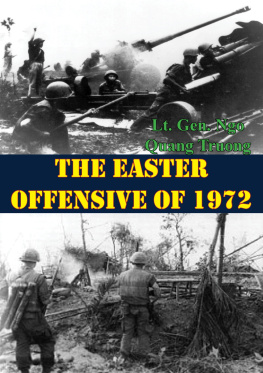

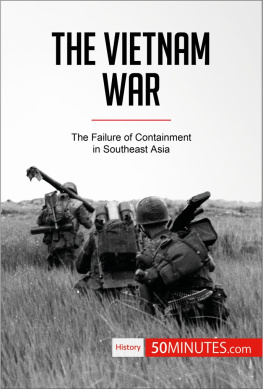
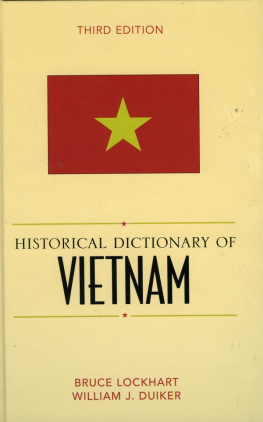
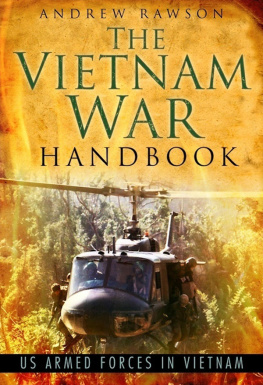

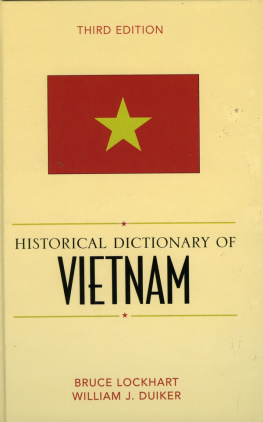
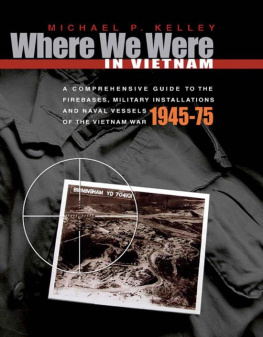

 The paper used in this publication meets the minimum requirements of American National Standard for Information SciencesPermanence of Paper for Printed Library Materials, ANSI/NISO Z39.48-1992.
The paper used in this publication meets the minimum requirements of American National Standard for Information SciencesPermanence of Paper for Printed Library Materials, ANSI/NISO Z39.48-1992.